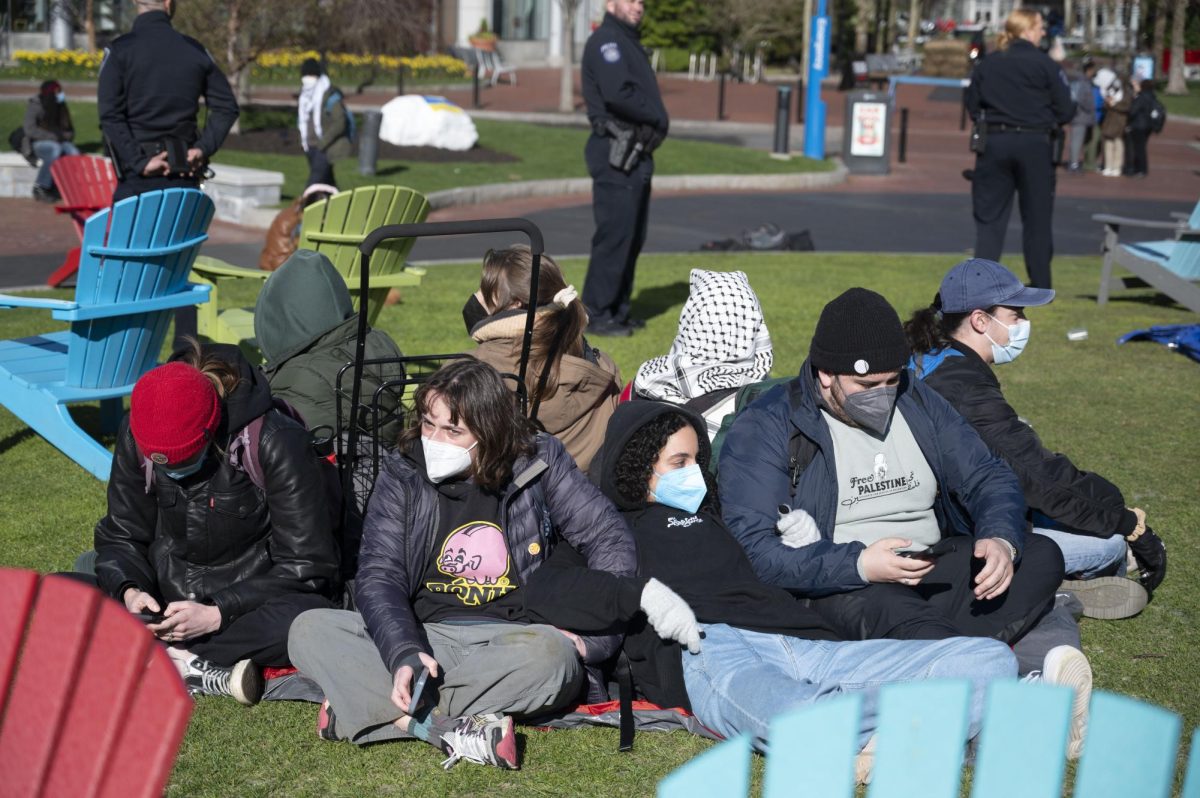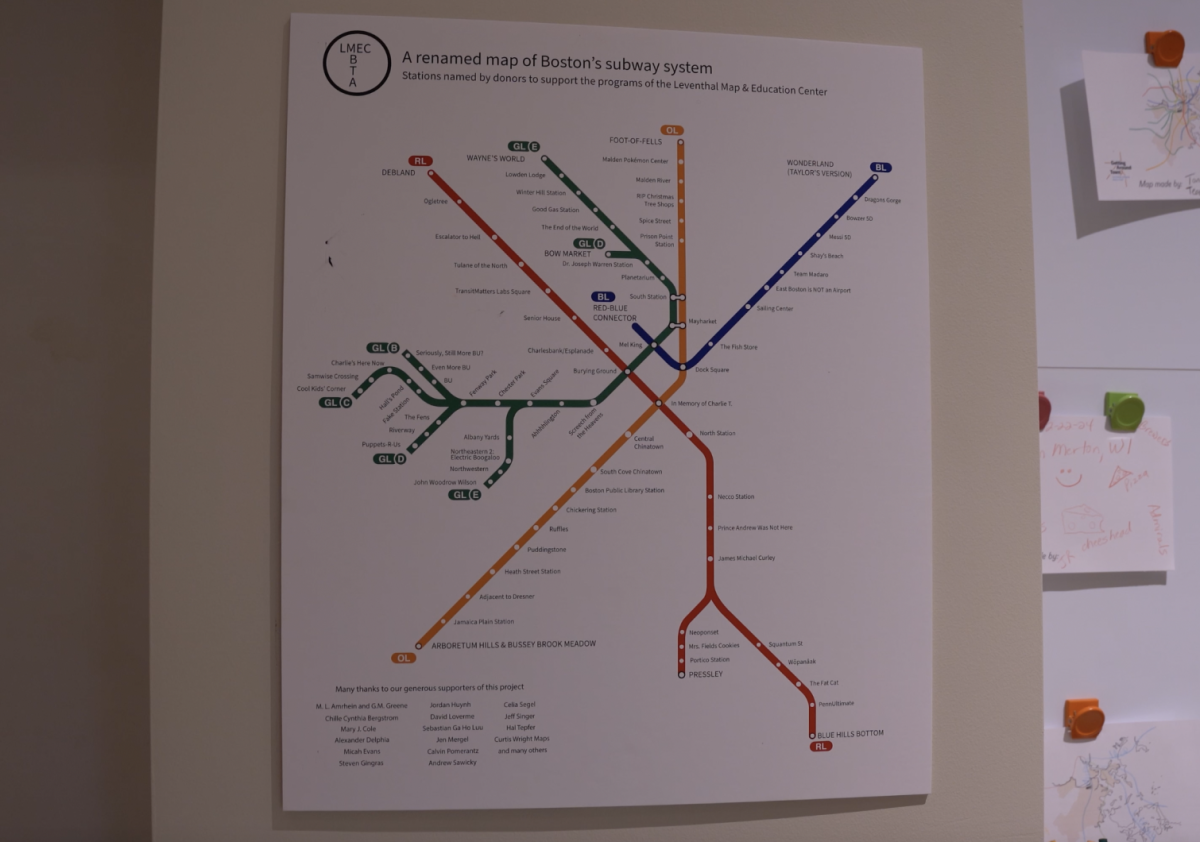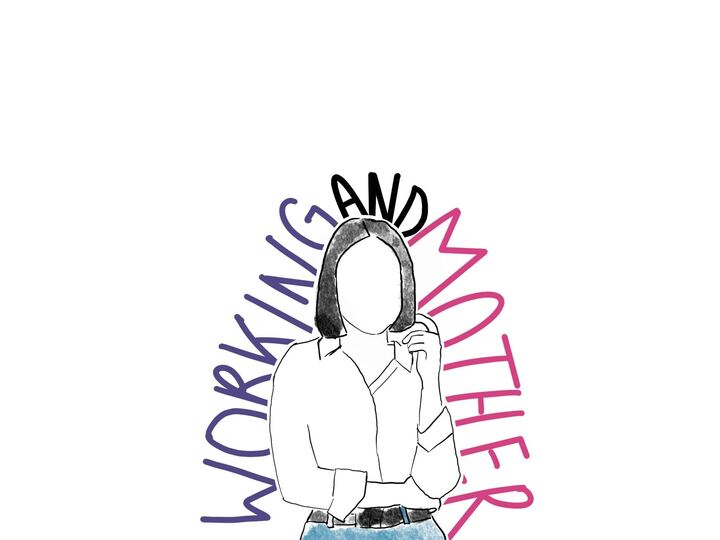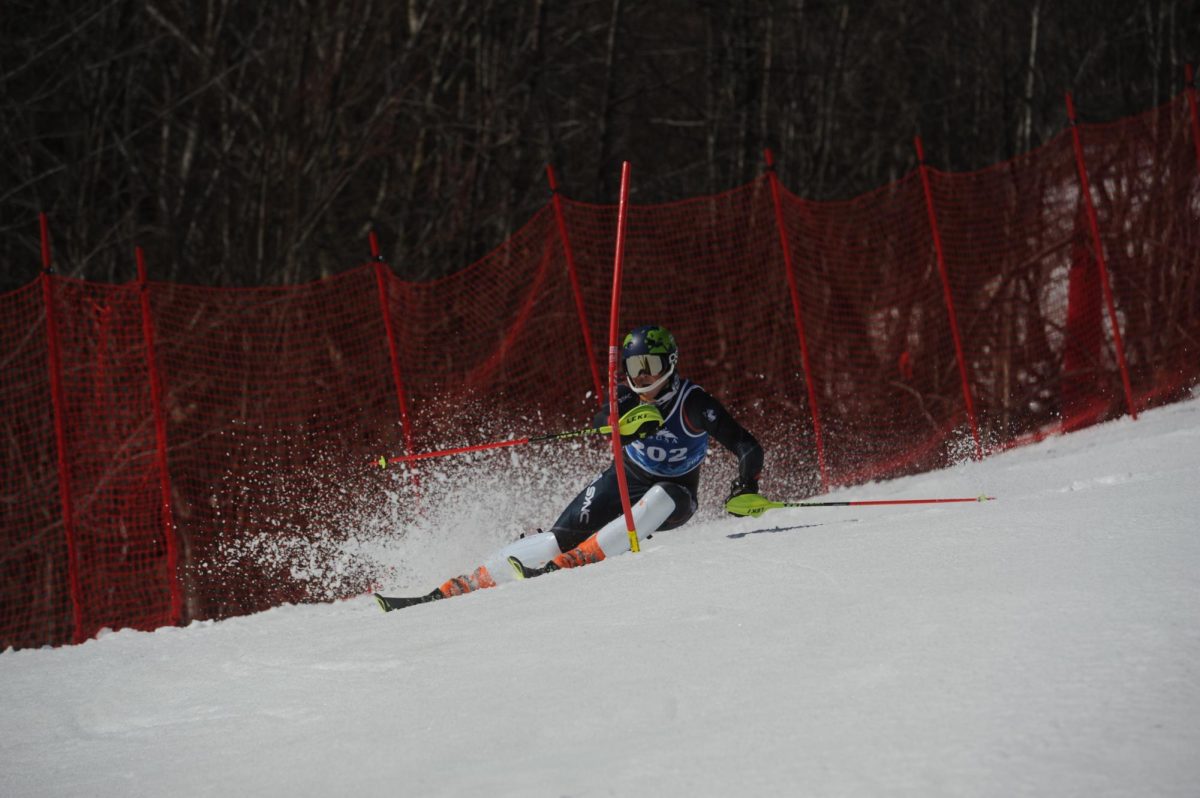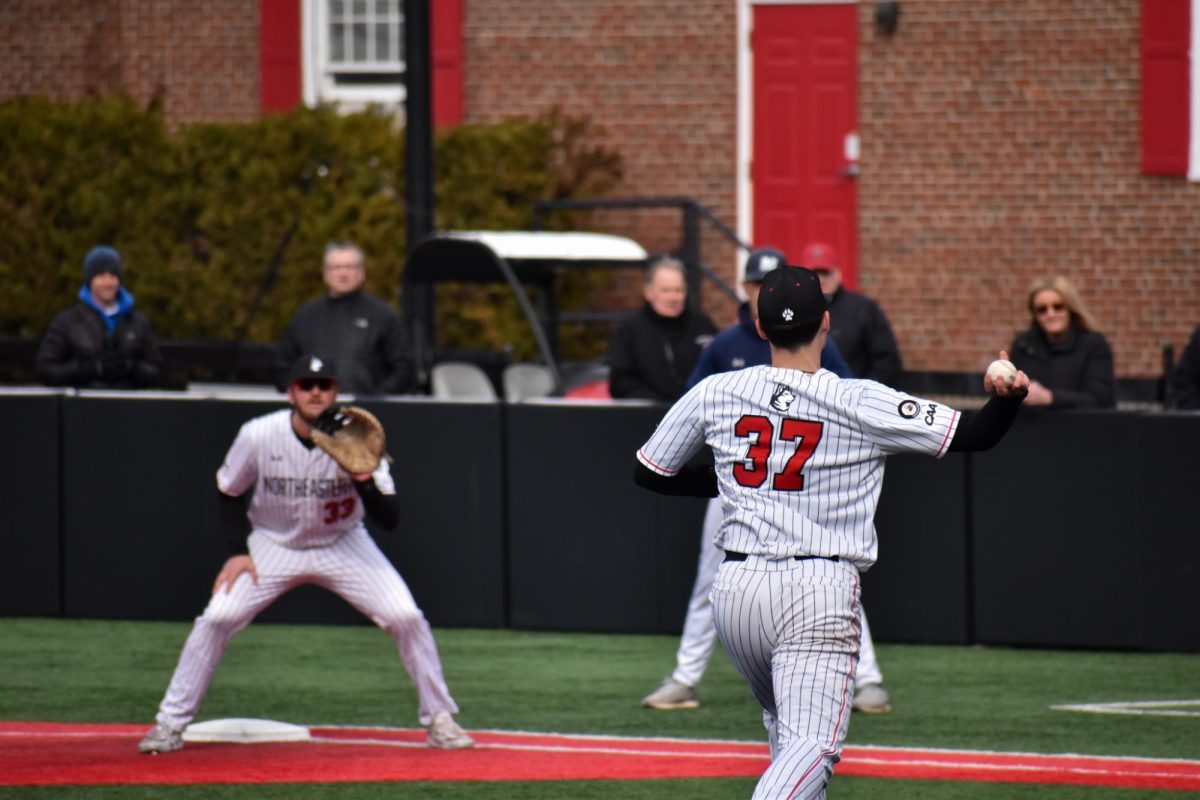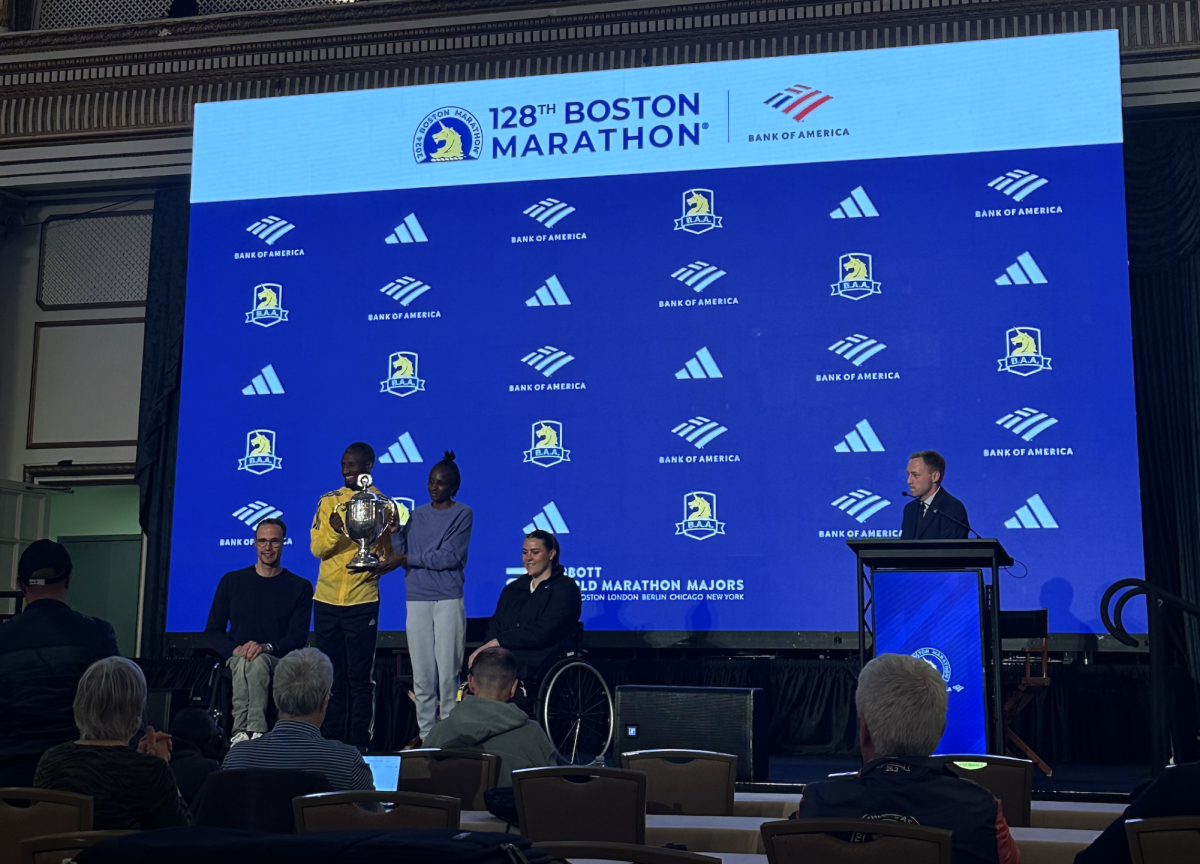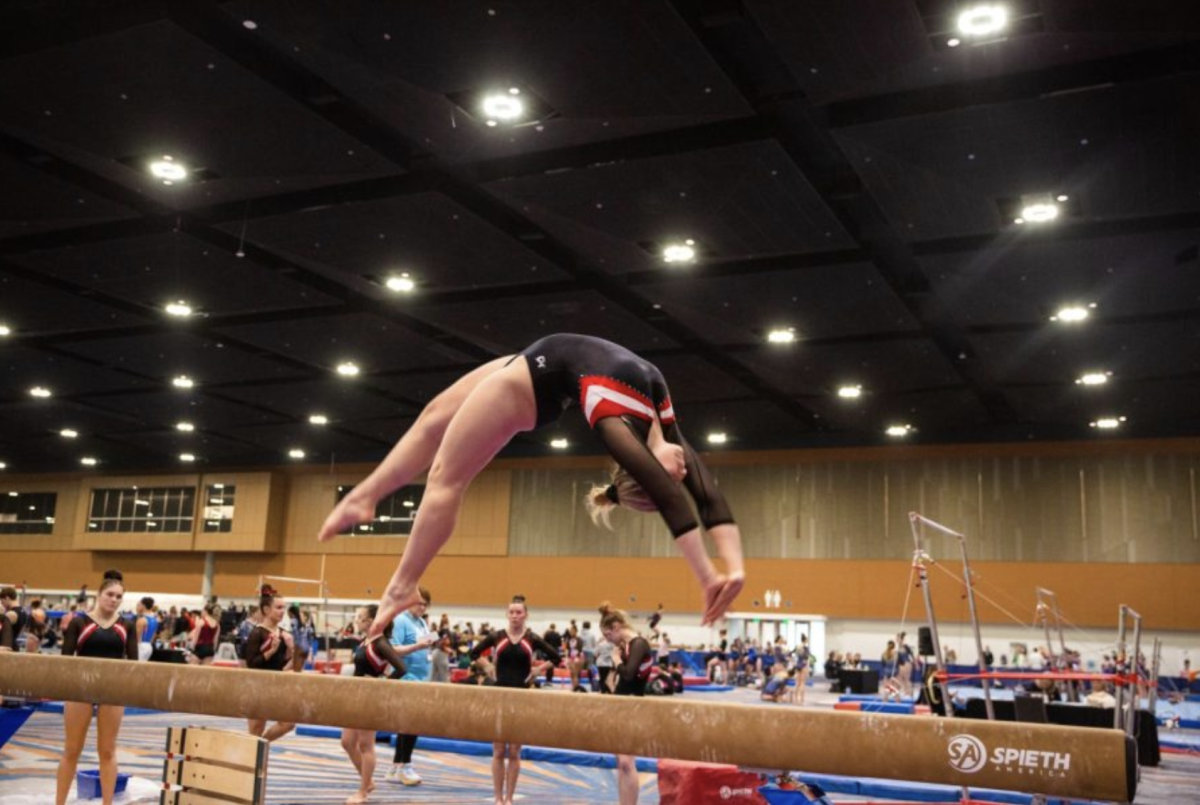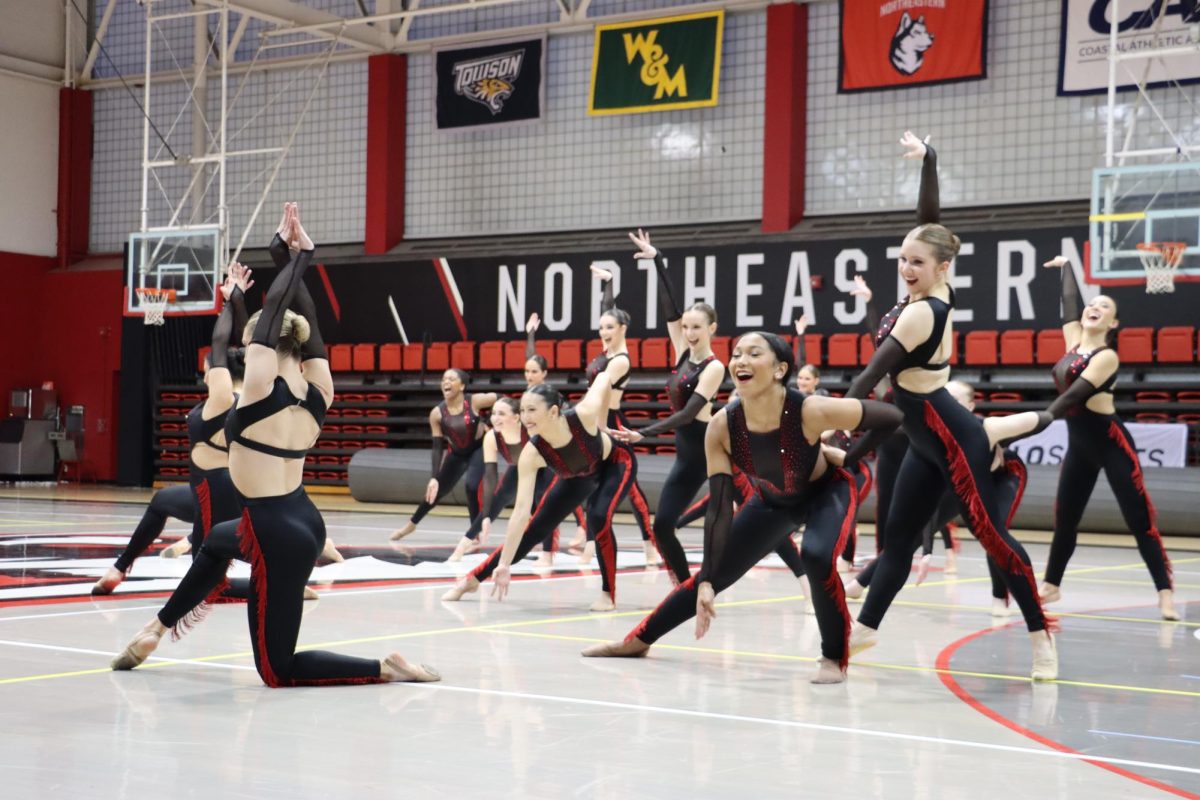By Jimmy Brooks, News Correspondent
[Editor’s note: this is a historical account that is set in the Columbus Lot, now the future site of Northeastern’s new state-of-the-art science and engineering complex expected to be completed by the Fall 2016 semester. Quotes in this story appeared in the May 26, 1888 edition of the Boston Post.]
The date is Nov. 1, 2013, and there is a 2006 Nissan Murano at first base. There’s a 2008 Ford Equinox in dead center, and a 2005 metallic Silver Honda Accord on the mound, right where John Clarkson would have twitched his burly mustache and unwinded a pitch over 100 years ago.
Columbus Lot, the humongous concrete slab that is now used for Northeastern student and faculty parking, sits in place of what once was a premier entertainment site for thousands of Bostonians: South End Grounds.
Just steps away from Ruggles Station, where the pedestrian walkway juts above the Bus Terminal, a lone green plaque sits unnoticed, providing the only true reminder of what once stood.
***
It is the spring of 1888, and Bostonians are flocking to the corner of Walpole Street (now St. Cyprians Place) and Columbus Avenue, specifically the main entrance to the South End Grounds. It is Opening Day at a brand new ballpark, and the streets are buzzing. Upon arriving at the front entrance of the stadium, fans are thrust into an optical overload. Dead ahead is a double-decker brick pavilion, which cost a king’s fortune of $70,000 to build. It is the first baseball stadium of its kind in Boston, and the quarter-circle-shaped structure is encompassed at both ends by two towering Victorian spires, sinister witch caps that seem to heavily contradict the clear-blue sky. In just four months, George Eastman will trademark the revolutionary Kodak camera, the perfect timing to instantly capture the beautiful structure for all of eternity.
On that very first spring day, approximately 12,286 Bostonians from all walks of life are present. Gamblers, immigrants and a healthy chunk of the elite, including Governor Oliver Ames, are there to witness Clarkson throw the first pitch at the brand new ballpark.
Ames utters some snarky comments during the early hours of the game, providing a foreshadowing of the home team’s fate that day.
“Why don’t they hit it?” Ames asked the man seated beside him as he watched his home team whiff at pitch after pitch.
“They would,” replied his colleague, “If they had a shovel.”
***
“Truly another opening day like yesterday on the South End grounds would seriously threaten all the tender memories connected with the history of Boston,” the next morning’s issue of the Boston Post trumped. “The Battle of Bunker Hill, the dumping of obnoxious oolong into the slimy waters of the harbor, and the historic ride of Paul Revere fade into nothingness when compared with the opening of this year’s league season.”1
Despite the 4-1 loss to the Philadelphia Quakers, Bostonians that day were willing to look past a lackluster performance by the home team, instead marveling at the spectacle that was the Grand Pavilion. Grossly overwritten headline aside, the venue itself was the news story, not the baseball game being played there.
A positive warmth seemed to emanate from all those who had attended the game. Instead of bashing the home team for failing to christen the new stadium in proper fashion, those in attendance were simply enthralled with their squad’s new venue.
In an atmosphere that was described as “a circus ground, a country fair and a cattle show all rolled into one,” there was something different about this game, this park. It wasn’t like the previous and somewhat vanilla South End Grounds, which stood from 1871 to 1887. It had a majestic feeling to it all, a charm, and it didn’t go unrecognized.
Arguably one of the most noticed and admired features of the stadium stood in right center field, a generous area of yellow-something perched on top of the outfield fence. Without notice, names of various players from both squads would suddenly appear at different points on the novelty structure. Upon further examination, it was discovered that the subject of much ogling was an electrical scoreboard, which displayed balls, strikes and all else baseball-related.
This was just one of many ways the new South End Grounds had of captivating its audience.
“You would have felt like you were a part of a special group of a few thousand to perhaps 10,000 fans,” said Herb Crehan, member of the Boston Braves Historical Association and Society for American Baseball Research. “It was a time when folks were migrating from the country to the city and [the grounds] provided a sense of community. For recent immigrants, it provided a sense that they had been assimilated.”
In an era where entertainment options did not extended far beyond the confines of cinema and sport, baseball games were cherished dearly, and predominantly by men, who made up the vast majority of the crowd. And while the South End Grounds were able to evoke some of the same magical emotions that millennials claim Fenway Park does, there was one stark difference that likely ruled out the same “good, clean family fun” reputation the home of the Red Sox has earned.
Betting men were strewn about generously in the outfield bleachers. With restrictions against such activities in place, the gamblers did their best to remain incognito. If their covers were blown, they risked being bullied out of the ballpark by security guards.
“Gambling was rampant in the old South End Grounds. That was a major part of baseball’s appeal. There was no Foxwoods and no Suffolk Downs so [the park] filled a void,” Crehan said, adding that while gamblers would often frequent the Pesky’s Pole area of Fenway in the 1960s, it was conducted in a subtler fashion during that time.
Throughout the team’s tenure at the South End Grounds, those who bet on the home team would have padded their disposable incomes nicely. The Beaneaters posted a historically staggering .690 win percentage at the ballpark over the course of the 1888-1893 seasons, adding onto the fable-like reputation the park had earned.
“That era was probably the glory days of that team,” Bob Brady, President of the Boston Braves Historical Association, said of the Beaneaters. The organization would undergo numerous multiple name changes in the following two decades, including a name change to the Braves in 1912.
“During that time frame, they were as dominant as the Yankees were later on,” he said. “That team, that era, that ballpark sort of sunk the roots of Boston baseball history into the soil. It gave berth to the tenacity of the fandom in Boston for baseball.”
According to Brady, baseball saw an increased level of professionalization during this critical time period, and naturally had an inverse effect on amateur baseball. Teams began to improve their venues in hopes of bolstering attendance figures. More and more money was poured into ambiance—like an electronic scoreboard—and the subsequent spike in attendance spilled over into nearby businesses, causing the merger of two pastimes still adored by Bostonians.
“The surrounding area was ringed with taverns, these folks would gather before and after the game and talk about baseball and celebrate a victory or wash away their miseries when there was a defeat,” said Brady.
In the years that followed, the Beaneaters would go through extensive changes. The team was blown up in 1901, with many players choosing to cross the railroad tracks to play for the Boston Americans, who played at the Huntington Avenue Grounds.
With the new name and the new field came a huge influx in talent. Cy Young would go on to start eight memorable seasons for the Americans, earning the team a 1903 World Series championship. Babe Ruth would join the team in 1914, after the team posted a losing record in ten of eleven seasons before him.
Ruth left the team in 1919, and to this day, some say it was this move that caused the team to suffer a World Series drought that spanned nearly a century.
What is often overlooked however, is that something else likely altered the Boston Sports scenery even more. If not for the fateful events that occurred at the South End Grounds one spring day in 1894, the current Boston Sports landscape might be incredibly different. Babe Ruth might have never come to town. The Red Sox might have never been established, and legends such as Ted Williams and Pedro Martinez would have never graced Fenway, since Fenway might not have been built. Championships in 2004, 2007 and 2013 might not have taken place because the Beaneaters may have remained the top baseball show in Boston, causing a butterfly effect that likely could have driven the Americans into a much different position with another baseball team to compete with.
All because of a lone cigarette.
***
On May 15, 1894, almost exactly 6 six years after the opening game at the South End Grounds, it happened.
The Beaneaters were in the middle of an afternoon contest with the Baltimore Orioles when smoke began to billow into the blue sky above from the right field bleachers. For the first time, it seemed as if the witch’s caps above the Grand Pavilion had fitting company.
Not long after, the witch’s caps were gone. The field was gone. The outfield bleachers were gone. The nearby taverns were gone. Even the nearby apartments were gone.
Google the Boston Beaneaters 1894 season results and you will find no mention of a May 15 game against the Boston Orioles. There is no scoreboard account for that day, but if there were, it would go something like this:
One cigarette, 60 minutes, 200 buildings, 12 acres, $300,000 in property loss and one $70,000 baseball stadium. And perhaps most significantly, the Boston Globe’s telling headline the following morning:
1900 PERSONS HOMELESS – STORY OF THE CONFLAGRATION.


